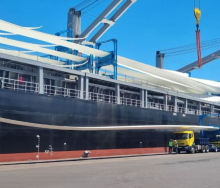An ongoing shortage of truck and bus drivers in Australia has reached critical levels, prompting urgent discussions among industry leaders and government officials to find solutions for a sector-threatening labour shortage.
This situation not only threatens the efficiency of supply chains but also impacts public transport services across the continent state, known for its vast interior expanses and urgent need for road haul efficiencies.
By way of example: to drive from Perth in the west to Sydney in the east on an almost parallel line is just over 4 000 kilometres, and Adelaide in the south is 2 618km away from Darwin in the north.
A dwindling labour base of drivers willing to cover these distances has resulted in approximately 20 473 truck driver positions that are currently advertised.
Despite the influx of 518 000 migrants in the past year, the majority of these new arrivals are filling entry-level positions rather than long-haul or heavy vehicle roles, which remain critically understaffed.
The average age of long-haul drivers is around 50, and many are nearing retirement, exacerbating the problem as fewer younger drivers enter the profession.
Industry experts argue that merely boosting immigration will not suffice and that a comprehensive approach is necessary.
This includes professionalising the truck driving vocation through apprenticeships and improving working conditions, such as establishing better rest areas for drivers.
Similarly, the bus sector is facing its own challenges, particularly in New South Wales, where the number of unfilled bus driver positions peaked at 800 earlier this year.
Although recruitment efforts have reduced this number to 380, the ongoing need for drivers remains pressing.
The Bus Industry Taskforce has suggested that recruiting overseas drivers, particularly from the Pacific Islands, could help alleviate this shortage.
However, there are concerns about the efficacy of this approach, with some industry representatives advocating for a focus on local recruitment and better working conditions to attract and retain drivers.
Both sectors are exploring technological solutions to enhance driver safety and streamline operations.
Advanced Driver Assistance Systems are being implemented to improve safety for bus drivers and passengers.
These technologies include automatic braking and collision avoidance systems, which not only protect drivers but also make the roles more appealing to potential candidates.
Moreover, simplifying training processes through virtual reality simulators and online modules is being considered to attract new drivers and ease the transition into the profession.
This approach aims to create a more manageable and less stressful work environment, which is crucial for retention.













